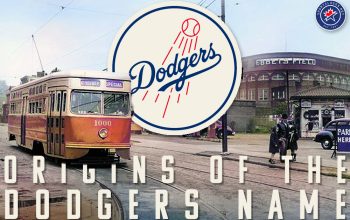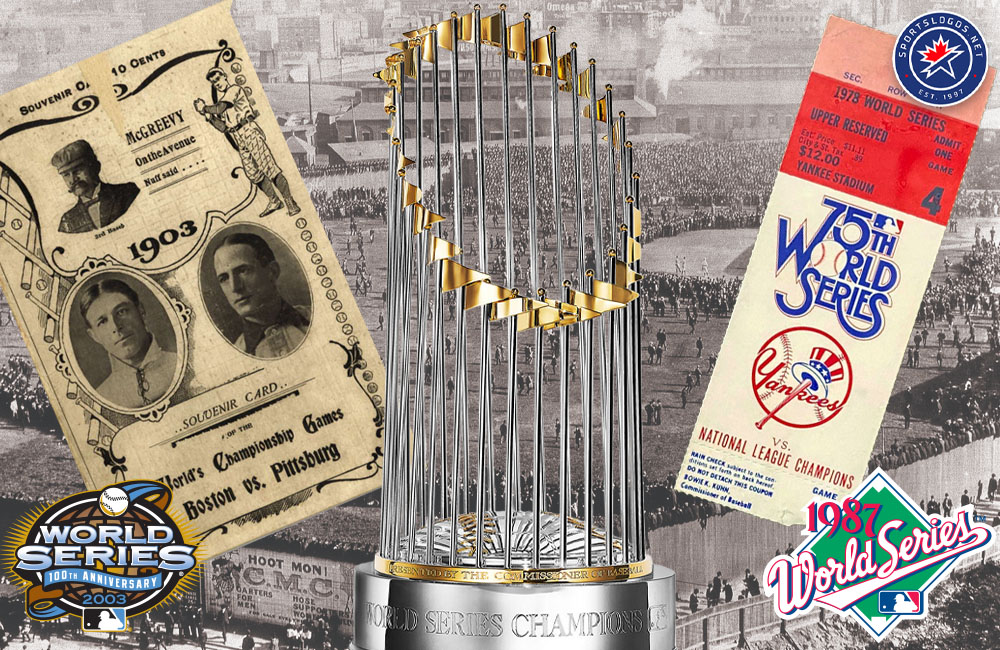
The World Series is so ingrained in our lives that it feels like it’s always been there. As long as leaves have changed colour, the biggest baseball games of the year have been played. Now, unless you’re well into your 120s (or were alive in 1994), that’s certainly been true.
But how did it all begin?
Now in its 121st edition, the Fall Classic grew out of a series of trial runs, handshake deals, and experienced a few stops and starts before settling into the seven-game battle for a flag-filled prize we know today.
Before 1903, the champions of each professional baseball league had to go out to find someone else to play. The National League’s Providence Grays met (and swept) the American Association’s New York Metropolitans in a three-game set in 1884, and other versions of NL-AA championships continued on and off through 1891. The NL tried a split-season format in 1892 with a postseason series between the winners of each half, but that idea was discontinued after one year. In 1894, Pittsburgh Pirates co-owner and president William C. Temple put up a trophy for a seven-game series between the NL’s first- and second-place finishers, known as the Temple Cup, but it lasted only four seasons.
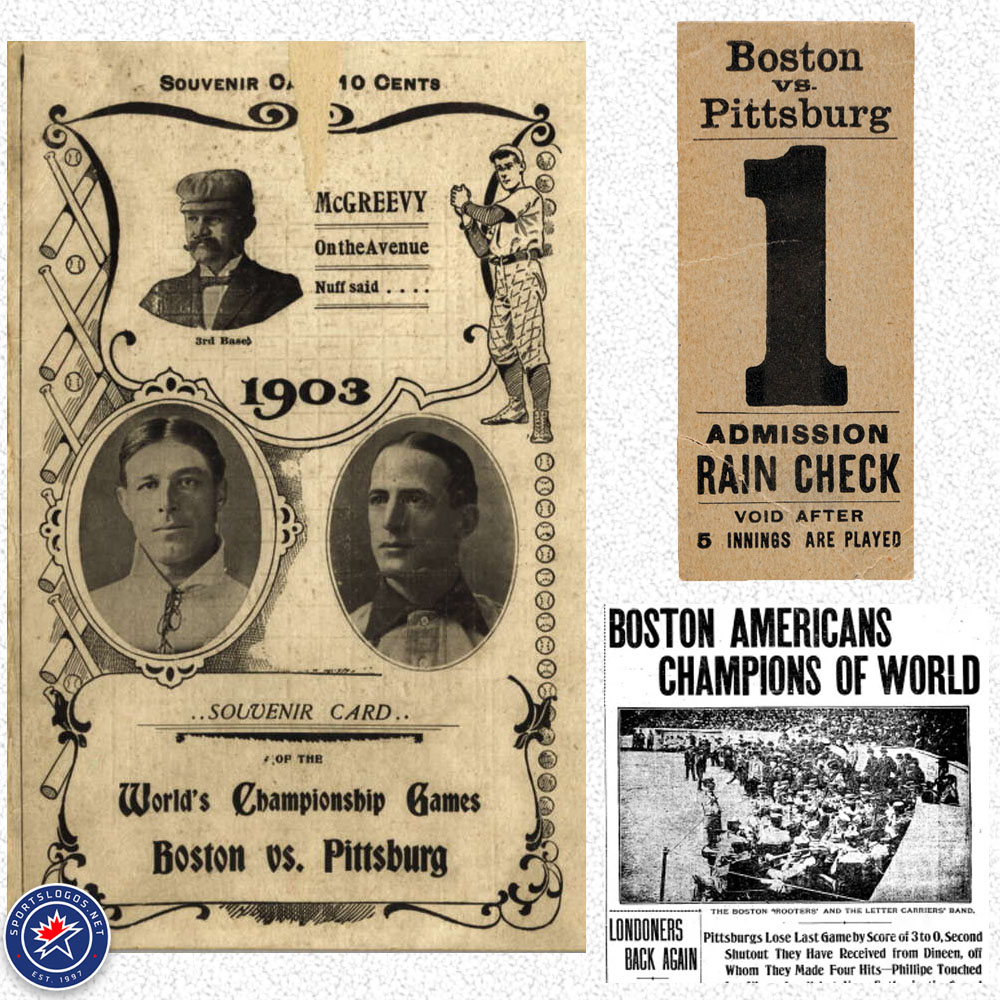
When the American League started play in 1901, there was no agreement in place to meet the well-established National League. In fact, even during the 1903 season, there were no plans for a championship series between the two. But in August, with the Pittsburgh Pirates and Boston Americans both cruising toward pennants, Pirates president Barney Dreyfuss and Boston president Henry Killilea made a deal, agreeing to a best-of-nine series between the two following the season. On September 16, they officially recognized the “World’s Championship Games” of 1903. Ticket price minimums were set at 50 cents, with the visiting club receiving 25 cents per ticket sold and each league furnishing one umpire.
That fall, Boston topped Pittsburgh in what is now recognized as the first modern World Series, five games to three. More than 100,000 fans attended the eight dates, including a “monster crowd” for Game Three in Boston with 18,801 paid that day (thousands more were reportedly turned away). Gate receipts topped $100,000 with each of the Boston players taking home $1,182 each ($43,000 in 2025), while the losing Pirates players each got $150 more after Dreyfuss contributed his personal share to the players’ pool. It remains the only time in World Series history that the runners-up earned more than the champions.
Those big bucks and enormous crowds weren’t enough to give us another series in 1904. Bad blood between New York Giants manager John McGraw and AL president Ban Johnson killed a series between the NL Champion Giants and the AL Champion Americans. To prevent personal relationships from cancelling a future championship series, a deal was struck to make the World Series an annual best-of-seven series between the two league champions beginning in 1905. Aside from a brief return to a best-of-nine format from 1919-21 and a player’s strike wiping it out entirely in 1994, the final series has been played in a best-of-seven format every year.
What champions received at the end changed, too. Much like winning their league, early World Series winners would receive literal pennants; clubs would also issue their own trophies following victories, with players getting various commemorative items such as medals and pocket watches and, starting in 1922, championship rings.
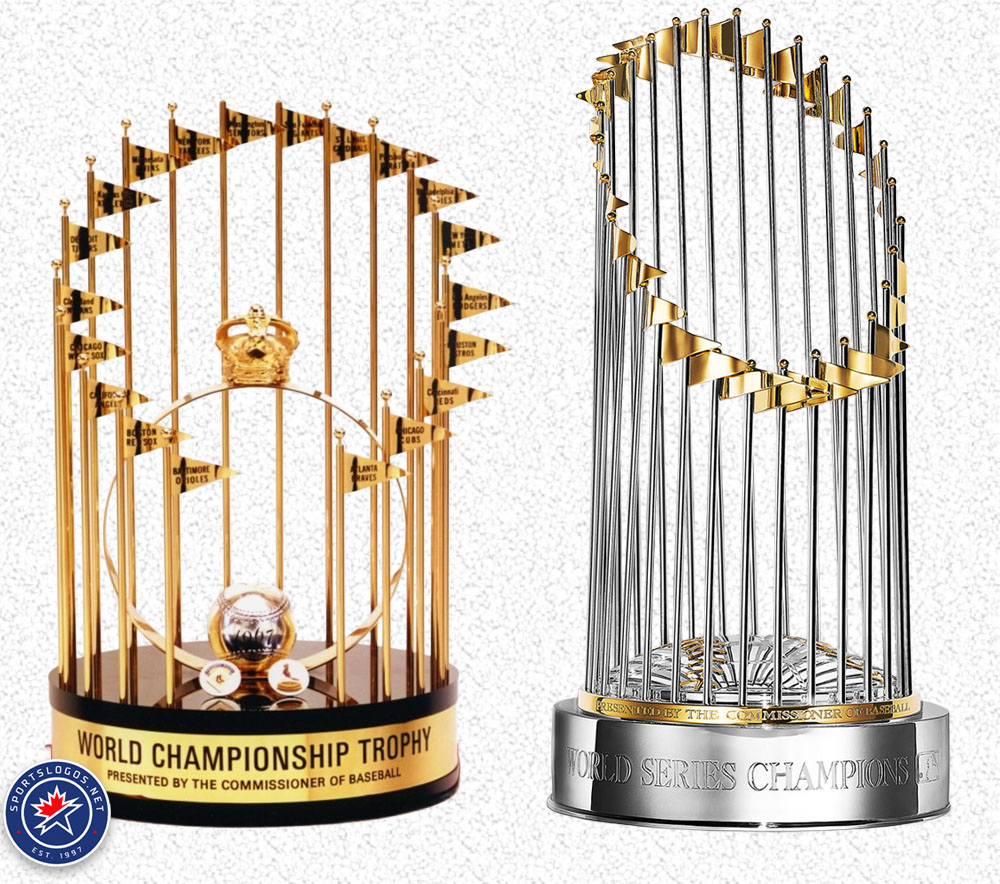
Believe it or not, an official World Series trophy didn’t exist until 1967, when Major League Baseball created one and presented it to the St. Louis Cardinals after their seven-game win over Boston that fall. Manufactured by Balfour of Attleboro, Massachusetts, the trophy ringed the base with a golden flag for every Major League club, with each one labelled with that team’s name. As the league grew, additional flags were added; there were 20 when it was first presented and 30 by the time this design was retired. The centre featured a gold baseball and crown sculpture. My personal favourite feature was the press pins of the two participating clubs mounted to the base below all the flags. Unlike the NHL’s Stanley Cup, a new trophy was created each year. Until 1985, the trophy had no name; it was finally dubbed the “Commissioner’s Trophy” that year.
In 2000, Tiffany & Co. redesigned the hardware, still known as the Commissioner’s Trophy. Now silver instead of gold, the trophy retained the 30 flag design (removing the team names) and created a globe-like base design, including latitude and longitude lines, and 24-karat vermeil stitching to simulate the look of a baseball. It stands 24 inches high, is 11 inches in diameter, and contains 198.12 troy ounces of sterling silver. Etched on the base are the words “Presented by the Commissioner of Baseball” as well as the year and “WORLD SERIES CHAMPIONS.”
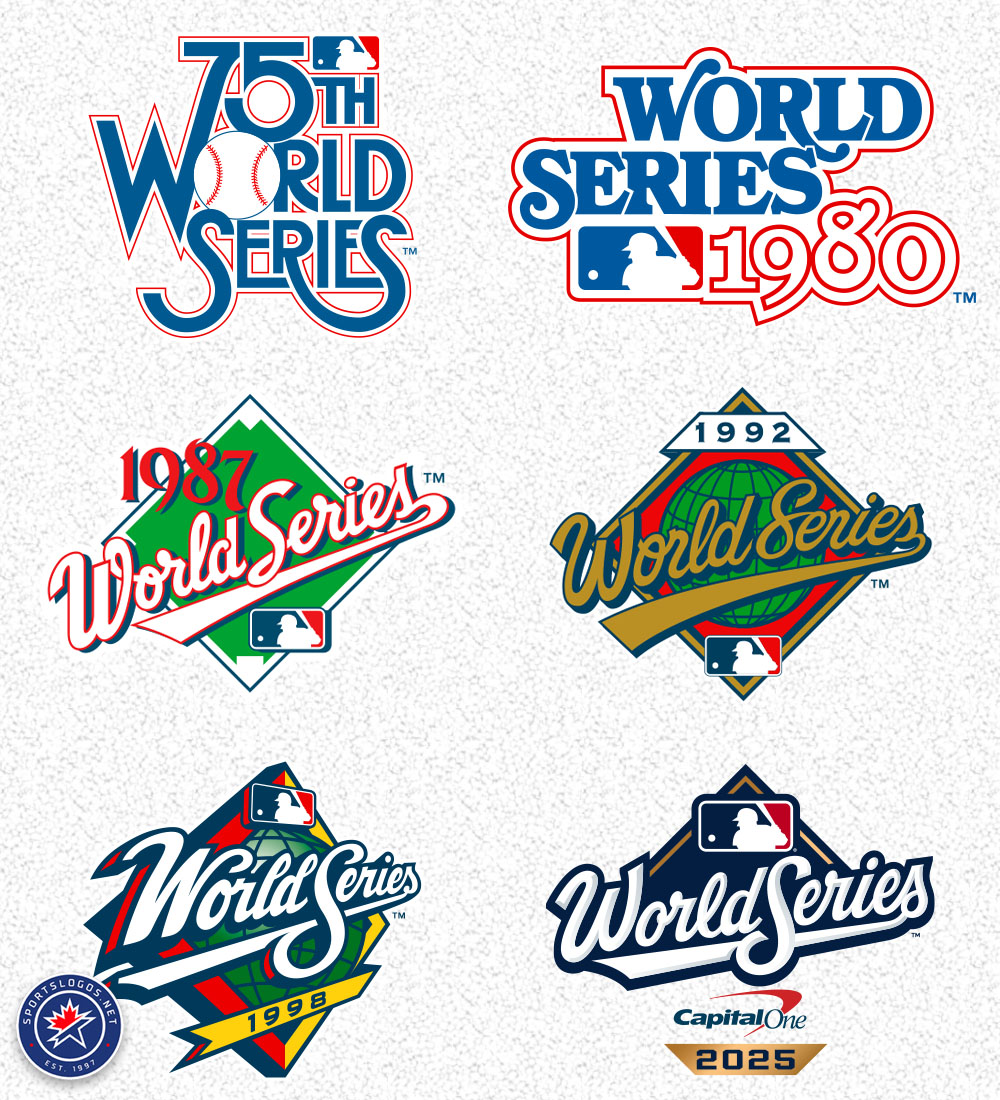
Official World Series logos weren’t really a thing until the late 1970s, when a special design was created for the 75th World Series in 1978. The logo was featured on tickets and the official in-game baseballs. This design was used for one more year (with the 75th updated to a 76th) before a new template, featuring “World Series” in royal blue above the year in white and red, was introduced in 1980 and carried through to the 1986 World Series. The most familiar World Series logo design came to life in 1987, coinciding with the first time a team wore it as a sleeve patch during the final series, “World Series” scripted across a ball diamond with the year of the event up top. The logo was modernized in 1992 with the addition of a globe and gold lettering, and again in 1998 when it was made 3D and turned to the side. Starting in 2000, the league began producing a unique logo every year before settling into a standard blue and gold colour scheme in 2022 and reintroducing that classic 1990s script-on-a-diamond look in 2025.










